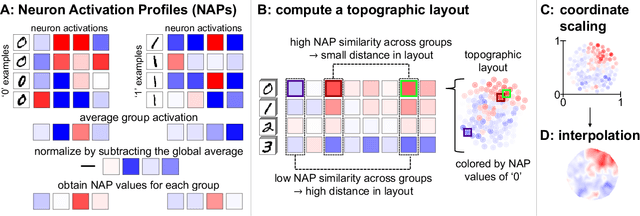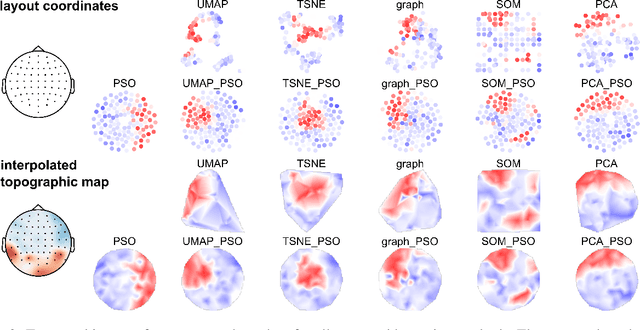Visualizing Deep Neural Networks with Topographic Activation Maps
Paper and Code
Apr 07, 2022



Machine Learning with Deep Neural Networks (DNNs) has become a successful tool in solving tasks across various fields of application. The success of DNNs is strongly connected to their high complexity in terms of the number of network layers or of neurons in each layer, which severely complicates to understand how DNNs solve their learned task. To improve the explainability of DNNs, we adapt methods from neuroscience because this field has a rich experience in analyzing complex and opaque systems. In this work, we draw inspiration from how neuroscience uses topographic maps to visualize the activity of the brain when it performs certain tasks. Transferring this approach to DNNs can help to visualize and understand their internal processes more intuitively, too. However, the inner structures of brains and DNNs differ substantially. Therefore, to be able to visualize activations of neurons in DNNs as topographic maps, we research techniques to layout the neurons in a two-dimensional space in which neurons of similar activity are in the vicinity of each other. In this work, we introduce and compare different methods to obtain a topographic layout of the neurons in a network layer. Moreover, we demonstrate how to use the resulting topographic activation maps to identify errors or encoded biases in DNNs or data sets. Our novel visualization technique improves the transparency of DNN-based algorithmic decision-making systems and is accessible to a broad audience because topographic maps are intuitive to interpret without expert-knowledge in Machine Learning.
 Add to Chrome
Add to Chrome Add to Firefox
Add to Firefox Add to Edge
Add to Edge